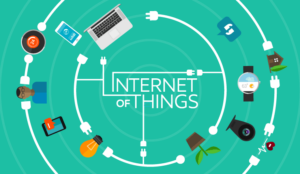As a result of the developments over recent years, the optimal internet telephony software choice now has to rise to the demands of contact centre employee experience as well as your brand’s customer experience (CX) strategy. This means quality experiences, so customers feel listened to by the brands they interact with, while also empowering the growing number of employees seeking hybrid or remote work. An omnichannel approach to CX can certainly help with the former, but what will drive voice-led strategies and facilitate flexible working?
Internet Telephony Software with VoIP and UCaaS
When considering which internet telephony software to integrate with your CCaaS solution, there are two methods to consider: Voice over Internet Protocol (VoIP) and Unified Communications as a Service (UCaaS).
The former powers the personal communication apps you use most such as WhatsApp and Skype. It works by using the internet to send and receive analogue-to-digital voice data between users.
It runs through a provider’s servers to be decoded at each user’s end, which means it is wholly managed and run on-site by the end users.
Meanwhile, UCaaS uses VoIP to facilitate business communications functions for not only voice but video, conferencing, videoconferencing, messaging and collaborative capabilities such as virtual whiteboards.
Indeed, an entire suite of popular business communications platforms such as Zoom and Microsoft Teams can be grouped under the UCaaS umbrella.
Applications of Internet Telephony
Hard Phone
The historical mainstay of workplace telephony was the hard phone, which typically took the form of a desk phone or conference room setup. Now they are capable of leveraging VoIP capabilities for business communications.
With that said, there are significant disadvantages should someone even consider using them for modern business communications.
For one, there’s a lack of mobility. Hard phones must stay tethered by Ethernet to the outlet where they are installed, which severely curtails their flexibility. Another is that, though VoIP can be leveraged, they represent additional costs both for purchase and maintenance.
Taken together, these factors, cost and productivity, have led to a move away from hard phones, a shift further accelerated by the increase in remote and hybrid working.
Softphone
Capable of leveraging UCaaS, so-called “soft” phones are a kind of internet telephony software that can operate without the need for any additional hardware, and provide mobility for contact centre agents working remotely.
What’s more, softphones offer more features than simply hard phone calls and conferences. File transfers, messaging capabilities and digital whiteboards are all available with softphones, and these features can be updated to the latest versions more quickly and easily.
Unified communications platforms like Zoom, which were highly touted as a way to preserve as many office functions as possible, became popular during the Covid-19 lockdowns.
However, using multiple applications can be disruptive to workflow. This is one reason why contact centre technology has evolved further, to integrate many of these key functions in a single platform.
WebRTC
If your contact centre is in need of a solution that helps your agents provide top-tier CX while keeping costs down, ensuring mobility and minimising training time for agents, WebRTC delivers.
WebRTC provides natively integrated, UCaaS-powered internet telephony features that can be readily accessed via web browsers, requiring no extra software to be learned and mastered.
This technology enables call management capabilities based on agent skills and availability, distributing calls where they’re needed. Contact centre managers can also make use of statistics from every workstation to monitor agent workloads and performance.
WebRTC is a beneficial solution for contact centre managers and agents alike because it helps maintain contact centre functionality no matter where agents are. Most importantly, these features mean WebRTC is your brand’s partner in optimising the customer journey.
Internet telephony is a great way to enhance efficiency but is average handling time (AHT) still a great way to measure this in the modern contact centre?
Author: Guest Author
Published On: 17th Oct 2022
Read more about - Guest Blogs, Odigo





































